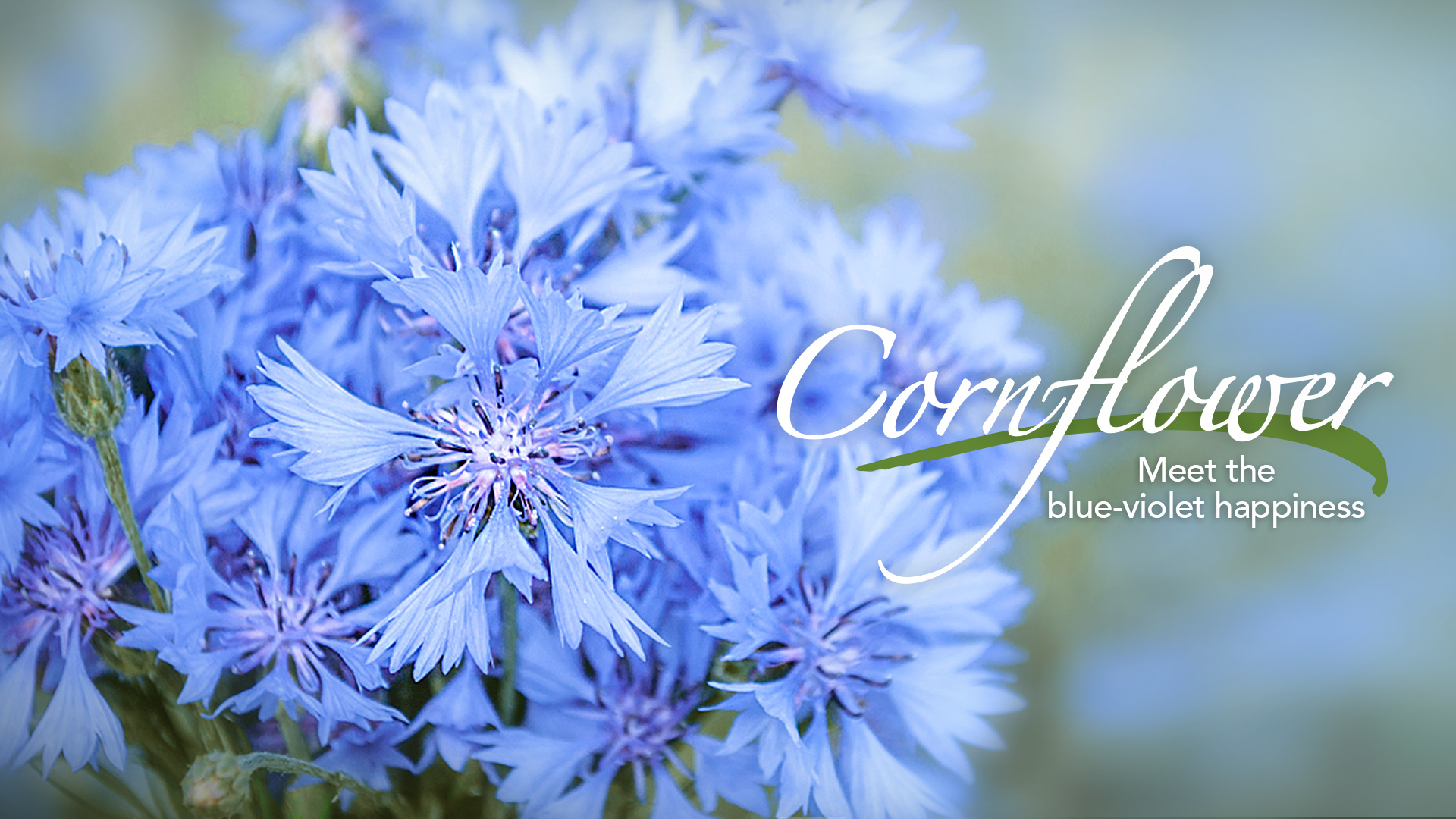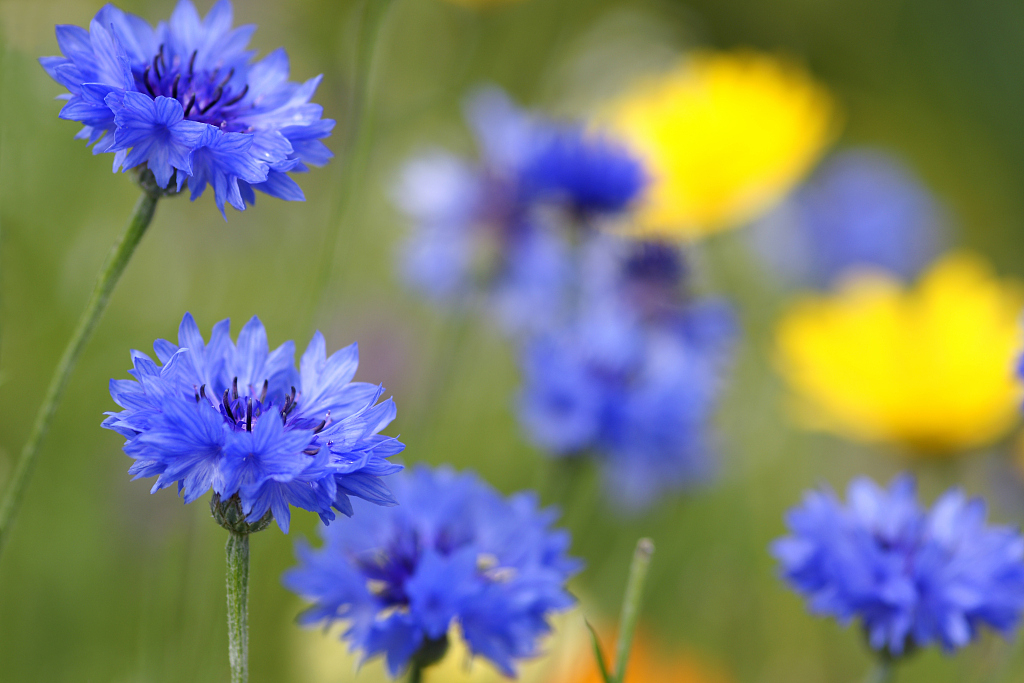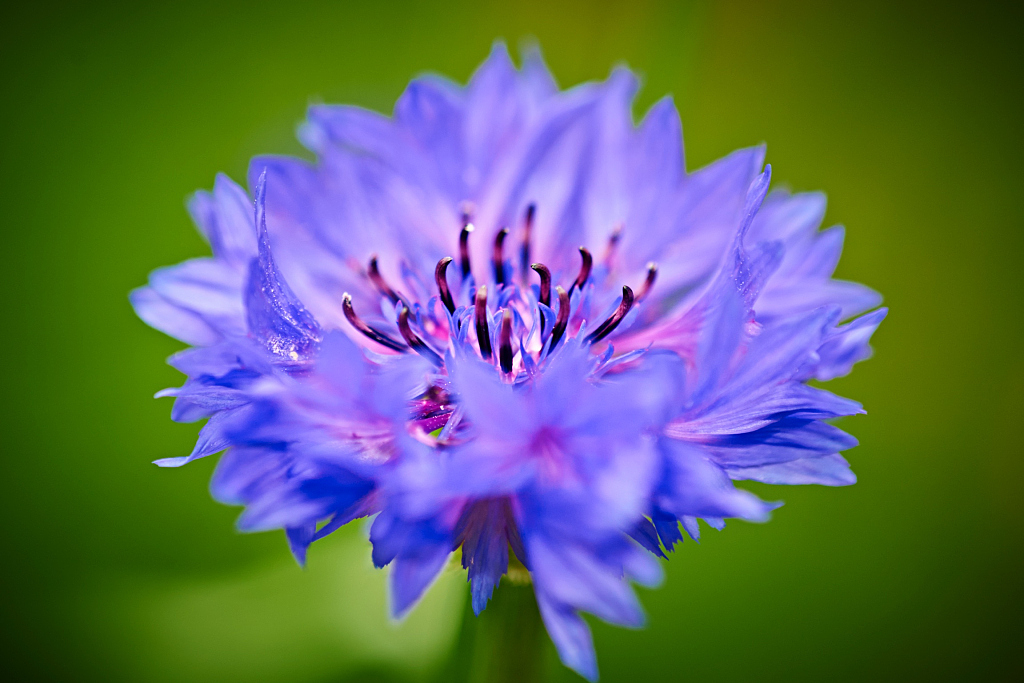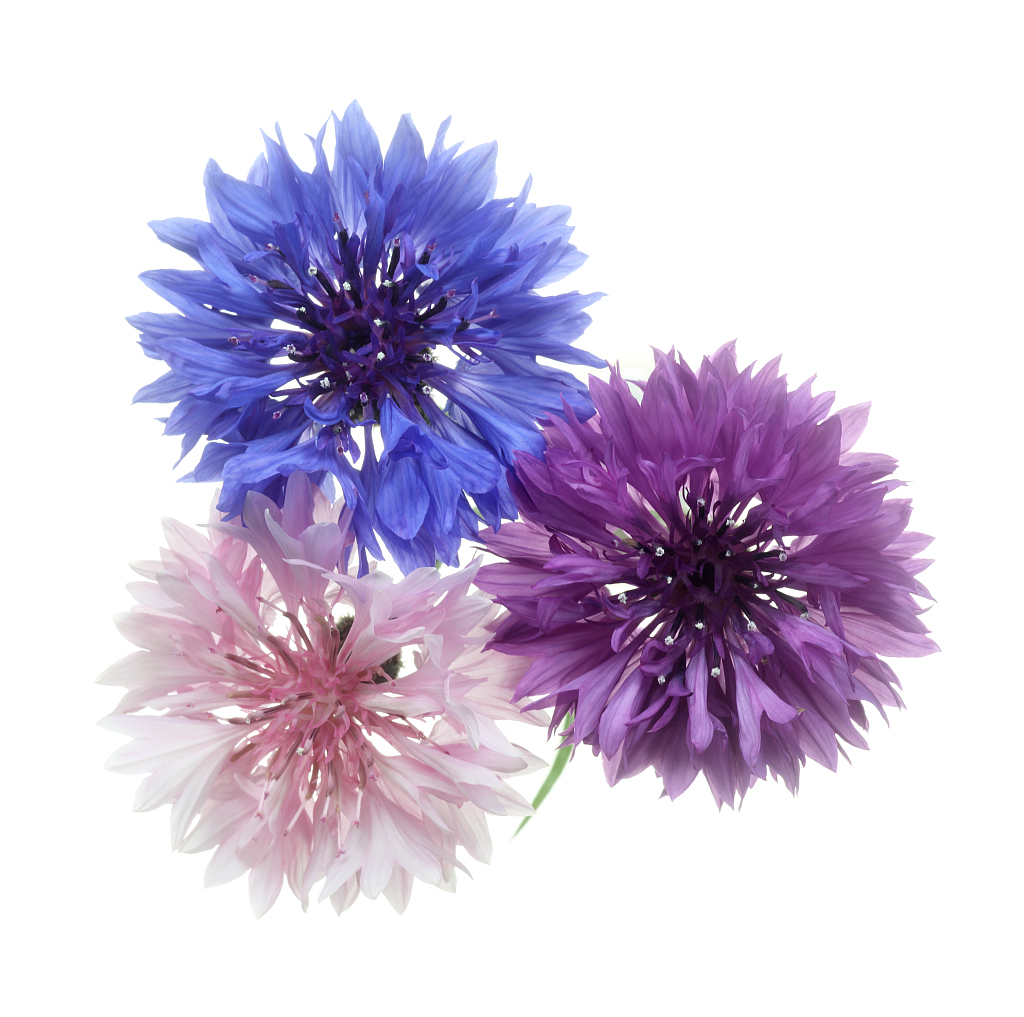00:19

In Europe, there is a famous legend about King Wilhelm I of Germany. He was forced to flee during the Napoleonic period, and found himself in a wheat field. He saw his mother using cornflower to pacify the children who were with her. The scene moved him, hence he decided to put the cornflower on his heraldry after he was back on the throne.

Blomming cornflower. /VCG Photo
Blomming cornflower. /VCG Photo
The cornflower is an annual flowering plant native to Europe. Because it used to grow as a weed in cornfields, the name speaks to its original habitat. However, due to the increased usage of herbicides and fertilizers, the number of wild cornflowers had declined in the past 60 years.

Closeup of a cornflower. /VCG Photo
Closeup of a cornflower. /VCG Photo
The cornflower is currently cultivated in gardens and flowerbeds for ornamental purposes worldwide, as it produces showy flowers with shiny blue-violet colors. Gardeners also breed other colors like pink and white to make the flower more attractive.

Cornflowers of different colors. /VCG Photo
Cornflowers of different colors. /VCG Photo
The blooming period of the cornflower is usually the whole summer, but it could last until October if you choose the right time to sow the seeds and take good care of them.
The flower is not difficult to grow, so what you need is to make sure it receives enough sunlight and water, and move these flowers indoor during cold winter. The seeds of cornflowers will germinate quickly after you plant, hence you can wait for them to thrive with happiness.
(Video via VCG, edited by CGTN's Xu Chenlu. Video cover designed by CGTN's Gao Hongmei)
(If you want to contribute and have specific expertise, please contact us at nature@cgtn.com.)